
 |
|
|
Photo Notes |
Photographs:
Alfred
Cheesman,
c. 1935.
Gerald Finzi,
1925
“F. W.” Harvey,
c. 1922.
Herbert Howells,
c. 1920.
Articles Coming Soon:
The Chapman family
Alfred Cheesman (1864-1941)
Howard Ferguson (1908-1999)
Gerald Finzi (1901-1956)
John W. Haines (1876-1960)
Frederick William “Willy” “Will”
“F. W.” Harvey (1888-1957)
Herbert “Howler” Howells
(1892-1983)
Sir Charles Hubert Parry
(1848-1918)
Sydney Shimmin (1891-1968)
Sir Charles Villiers Stanford
(1852-1924)
Ralph Vaughan Williams (1872-1958)
Arthur Benjamin
(1893-1960)
By Pamela Blevins, © 2000
In 1934 while Ivor Gurney was languishing in the City of London Mental
Hospital, the music of his friend Arthur Benjamin was thrilling British
film audiences who flocked to see Alfred Hitchcock’s spy mystery The
Man Who Knew Too Much.(Footnote *1)
Benjamin
had composed a dramatic Storm Clouds Cantata for a
tension-filled
scene in the Royal Albert Hall during which the heroine of the film
must
stop an assassin from shooting a visiting foreign statesman. The
assassin has memorized the music by listening to a recording and waits
patiently for the thunderous climax of cymbals which will muffle the
sound
of his gun. But the heroine, in desperation, screams just at the
moment when the cymbals crash. The prime minister is distracted
by
her scream and the assassin’s bullet only wounds him. For Gurney,
who enjoyed a good mystery, the film and the success of his friend’s
music
would have been events to celebrate had circumstances been different
for
him.
Arthur
Benjamin
had once been one of Gurney’s closest friends, a man he trusted enough
during his college years to call him his “confidant”. The two
composers
met in 1912 when Benjamin won an open scholarship to the Royal College
of Music along with Gurney’s good friend Herbert Howells.
Benjamin
was a sophisticated and attractive young man, an experienced traveler,
adept at foreign languages, an engaging conversationalist, financially
well-off, living comfortably in pleasant lodgings in Bayswater, and
eager
to become part London social scene. The three students became
close
friends often attending concerts together, discussing music and
literature
and socializing at cafés where artists and writers gathered.
Benjamin was born in Sydney, Australia on September 18, 1893, but spent
his formative years in Brisbane, where he studied at the Brisbane
Grammar
School. He was hailed as a child prodigy and a brilliant pianist
blessed with perfect pitch. His gifts had come to the attention
of
teacher and composer Thomas Dunhill who had met Benjamin during a visit
to Australia and encouraged the boy to study in England.(*2)
In 1911, he left Australia on the long journey to London to study
composition
with Charles Villiers Stanford, piano with Frederic Cliffe, whose wife
was related to Benjamin’s father, and harmony and counterpoint with
Dunhill.
Benjamin pursued his studies with diligence and completed the
prescribed
five year course in two years. He was in demand as a chamber
performer,
and, in 1914, was the soloist in Herbert Howell’s
Piano Concerto
in C minor in the Queen’s Hall with Charles Stanford
conducting.
Thanks to Dunhill, several of Benjamin’s early compositions were
published.
At the
outbreak
of World War I, Benjamin enlisted in the infantry but later transferred
to the air corps, becoming a gunner with the Royal Flying Corps.
In August 1918, he was shot down over Germany and spent the rest of the
war in a prison camp writing music. After the war he returned to
Australia as Professor of Pianoforte at New South Wales State
Conservatorium
of Music, but remained there only two years. He missed the cosmopolitan
atmosphere of London and returned in 1921 to concentrate on his
performing
career. He spent four years practicing and preparing and, in
1925,
made his first post-war concert appearance with Sir Henry Wood.
He
toured extensively in Europe, the United States, Canada and Australia.
In 1924, his
Pastoral Fantasy for string quartet had won
the Carnegie Award and in 1926, he became a teacher of piano at the
RCM,
where his students included Benjamin Britten, and fellow Australians
Peggy
Glanville-Hicks and Miriam Hyde. He came into prominence as a
composer
in 1932 with his concerto for violin and comic opera The Devil
Take
Her.(*3)
By 1930, talking films had created a new industry in England — film
music
— and Arthur Benjamin was among the pioneers in this fledgling art
form.
He had been approached by Muir Mathieson, who was music director of the
London Films studio, to compose the score of The Scarlet
Pimpernel
(1934), a lavish production starring Leslie Howard. Mathieson had
been a student of Benjamin’s at the RCM. The same year,
Benjamin
composed the score for The Man Who Knew Too Much.
The
London Symphony Orchestra with a chorus, conducted by H. Wynn Reeves
performed
the cantata before a live audience of extras gathered at the Albert
Hall.
The performance was recorded during the filming and so it could be
played
back for editors to match the scenes to the music. During the
1930s,
Benjamin composed music for ten films.(*4)
In 1938, he
resigned his position at the RCM and emigrated to Vancouver, British
Columbia,
where he taught and gave radio talks for the Canadian Broadcasting
Corporation,
which had become a forum for the composition and performance of music
by
Canadian composers. After war broke out in Europe,
Benjamin,
a non-practicing Jew, decided to remain in Canada and sent for his
elderly
mother to join him. In 1941, he was appointed conductor of the
CBC
Symphony Orchestra and promptly challenged conventional approaches to
orchestral
programming. He established the popular Vancouver Sun Promenade
Symphony
Concerts.
Benjamin was
highly regarded as a teacher and was particularly influential in the
work
of Jean Coulthard, who, in 1998, still had vivid memories of her
teacher.
“From virtually the moment of his arrival, Arthur Benjamin began to
perform
new music — both international and home grown. He organized the
now
famous ‘Proms Concerts’ of Vancouver and did his utmost to stimulate
young
composers...” and she credited him with infusing her with the
self-confidence
she needed to tackle large scale works.
In 1944-45,
Benjamin was a popular lecturer at Reed College in Portland,
Oregon.
“His vast array of knowledge on every conceivable subject, his
scholarly
yet every-day approach to pedagogy, his keyboard dexterity, his mature
and warm interpretative ability — these are all molded into one whole,
resulting in an instructor who is completely admired and who commands
the
utmost in respect,” wrote a reporter for the college newspaper in 1945.
Benjamin
returned
to England in the mid-1940s and resumed teaching at the RCM where he
remained
until 1953. He returned to composing film music and between 1947
and 1957 produced nine scores. In 1949, he composed his grand
opera
A
Tale of Two Cities. Benjamin’s largest commercial success
was his 1938 composition Jamaican Rumba, which enjoyed
numerous
recordings and is still available today.
Arthur
Benjamin
died in London on April 10, 1960. His music manuscripts are
housed
at the British Library.
1. The music appeared
again
in Hitchcock’s 1956 remake of the film starring Doris Day and James
Stewart.
In this version the music is listed variously as “Cantata Storm Clouds”
on a sign in front of the
Royal Albert Hall but appears in
the credits as “Storm Cloud” cantata. In that later version, the
American-born composer and conductor Bernard Herrmann conducts the
performance
on screen and the music is played through without interruption until it
is almost completed. The Storm Clouds Cantata has been
recorded
and is available on CD (details to come). [Go back
to text.]
2. Thomas Dunhill (1877-1946) was a close friend of Marion Scott and played a key role in securing the publication of Gurney’s first poetry collection Severn and Somme. [Go back to text.]
3. Benjamin’s 1935 Romantic Fantasy for Violin and Viola was recorded by Jascha Heifetz and William Primrose in 1945 but not issued until 1965 on the RCA label. [Go back to text.]
4. In the 1956 remake of The Man Who Knew Too Much, the cantata was conducted by Bernard Herrmann and Benjamin’s name appears briefly in the film on a poster outside the Albert Hall announcing the performance. [Go back to text.]
Annie Nelson Drummond McKay
(1887-1959)
By Pamela Blevins, © 2000
Ivor Gurney
met
V.A.D. Nurse Annie Nelson Drummond (Footnote *1)
towards the end of September 1917 at the Edinburgh War Hospital
(Bangour),
where he was sent after he was gassed at St. Julien. Gurney fell
in love with Nurse Drummond and they carried on a romance that ended
abruptly
in March 1918. Gurney continued to try to maintain contact with
Annie
after the war and during the 1920s when he was a patient at the City of
London Mental Hospital. But she never responded. By then,
Drummond
was living in Wellesley, Massachusetts, happily married and the mother
of a son.
Until
recently,
little was known about Annie Drummond, the woman Gurney dreamed of
getting
to settle down with and make “a solid rock foundation for me to build
on
— a home and a tower of light” and whose “beautiful simplicity”
reminded
him of “the kind of fundamental sweet first thing one gets in Bach, not
to be described, only treasured”.
| Annie
Nelson
Drummond was born on November 9, 1887 (*2) in the
village
of Armadale, West Lothian, Scotland. She was the eldest of five
children
of Margaret Boyd Drummond, a successful milliner, and Robert Drummond a
coal miner who worked the pits north of Armadale. With her
parents
away from the home for long periods of time, the care of her four
younger
brothers became her responsibility. Although she had little time
for herself, she took piano lessons and, living in a small village
anchored
in a barren, wind-swept landscape, she became sensitive to beauty and
found
great comfort in her love of flowers and birds. When her brothers
were old enough to look after themselves and each other, Annie began to
studying nursing but she interrupted her studies when war broke out and
instead joined the Scottish Red Cross Territorial Brigade. She
completed
studies offered by the Red Cross in advanced nursing and eventually
volunteered
to serve at the Edinburgh War Hospital, some nine miles from her home.
After her relationship with Gurney ended, he sent her a copy of the book Poems of To-Day inscribed “To Nurse Drummond, With thanks for joy and best wishes for all things to come, September 1918, From Ivor Gurney, S. Albans”. |
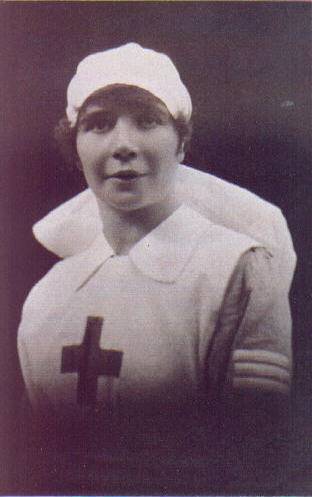 V.A.D. Annie Nelson Drummond, c. 1916. [Blevins] |
1. V.A.D. means
Voluntary
Aid Detachment which was a service organization of nurses aides founded
in Britain 1909 to augment the work of the Red Cross and the St. John’s
Ambulance Association. By the
summer of 1914, there 74,000
V.A.D.s
in 2,500 units across the UK. At the time, two-thirds were women.
They worked both at home and at the Front with the first V.A.D. unit
arriving
at Boulogne, France on October 28, 1914. In addition to their
nursing
duties, V.A.D.s could be called into service to cook, clean, do
secretarial
work and even arrange transportation. They were governed by very
strict rules that forbade them to appear in public with a man in
uniform.
Despite the rules, relationships between soldiers and V.A.D.s
flourished
anyway. [Go back to text.]
2. Note
by
Pamela Blevins: Update on Annie Drummond McKay’s Age: When I
began
doing my research on Annie Nelson Drummond, I was told by a family
member
that Annie was born in 1886 and that she was one month older than her
husband.
At times I have questioned the accuracy of this date because
information
available in various official documents seemed to indicate that she was
born in 1887.
However,
even
official documents, like memory, can sometimes be faulty. For
example,
on their September 1922 marriage certificate, both Annie and her
husband
James are listed as being 35 years. I knew that she was born in
November
and James was born in December so I assumed that at the time of their
marriage
each was indeed 35 years old and would celebrate their 36th birthdays
later
in the year. Why would they say they were 35 if they weren’t 35?
But Annie’s
age on her death certificate issued in May 1959 is 71, which means that
she would have celebrated her 72nd birthday in November 1959, which
means
she was born in 1887. I also have a copy of a census record that
indicates she might have been born in 1887. And then there is
Ivor
Gurney’s letter written around January 1918 in which he says Annie is
30,
which would have put her 30th birthday in November 1917.
Until I see
a copy of Annie’s birth certificate, I am inclined to accept 9 November
1887, not 1886, as her birthdate and 19 December 1886 as James McKay’s
birthdate. It was not uncommon for women of Annie’s generation to
trim a year or two off their age, but I do not think that is the case
here.
[Go back to text.]
Joy Finzi
(Joyce Amy Black Finzi, 1907-1991)
By Pamela Blevins, © 2000
Joy Finzi was a 20th century
renaissance
woman who possessed extraordinary vision and a remarkable gift for
anticipating
new trends before they began. She was an artist, sculptor, poet,
musician, and organizer who, as we say today, “made things
happen”.
And she was to be one of the most important people in Ivor Gurney’s
life
even though they never met.
For more than 30 years, Joy worked
tirelessly, first with her husband Gerald Finzi and later alone in
trying
circumstances, to ensure that Ivor Gurney’s work, correspondence, and
the
story of his life be preserved for future generations.
Starting
in the 1930s, Joy, Gerald and their friend Howard Ferguson undertook
the
massive task of sorting and cataloging Gurney’s poetry and music which
was in the possession of his friend and guardian Marion Scott.
Later, after Gerald’s death, it was
Joy Finzi who had to deal with the difficulties imposed by Gurney’s
brother
Ronald, who, at times, threatened to destroy all of Ivor’s papers and
refused
to allow publication of his work. At other times, Ronald
threatened
to take legal action against Joy, warning her that “as my brother’s
administrator,
I don’t intend to let anyone usurp my position”. Joy Finzi
refused to let Ronald Gurney intimidate her. Eventually he
relented
and placed Ivor’s papers in the Gloucester Library where they remain
today
on permanent loan.
Joy Finzi was born Joyce Black in
Hampstead on March 3, 1907 to Ernest Black, a prosperous businessman,
who
was an ‘East India Merchant’, and to Amy Whitehorn. Little
is known of her father’s family background, but her mother was of
Scottish
descent. The Blacks’ eldest son, Harold, was born in India in
1890
but died when he was 18 months old. A second son Geoffrey was
born
in 1892 in England and died from blood poisoning at the age of
21.
Joy’s younger sister Margaret or ‘Mags’ was born in 1909.
Joy was educated at Moira House in
Eastbourne, where the family had settled after her father’s
retirement.
Tall, fair, graceful and radiant, the young Joyce Black possessed the
kind
of beauty admired by the Pre-Rhaphaelite painters and abilities that
ranged
from music to tennis. She seemed to excel at whatever she
attempted.
Early on, Joy’s contemporaries recognized her extraordinary abilities
and
one friend later described how she stood in awe of Joy and “looked up
to
her as one with brilliant gifts in everything”. She studied
violin
and, after her marriage, sculpture and pottery at the Central School of
Art and Design.
Gerald Finzi met
Joyce Black when he rented a cottage from her in the early 1930s and
had
to call on her for help because a problem with the flue caused the
cottage
to fill with smoke. Joy found the young composer “singularly
inarticulate...plain
to the point of ugliness. Inhibited and aware of it...I had never
met anyone so sensitive and capable of hurt but with such boundless
vitality”.
But Finzi, “like all who have known the shadows...had an immense
capacity
for enjoyment. A great appreciation of many things — and infinite
delight & humour,” Joy was to recall many years later. (Footnote
*1)
Gerald and Joy were married on
September
16, 1933 at the Dorking Registry Office with Ralph and Adeline Vaughan
Williams and Mags Black as the only witnesses. They lived in
London
but soon moved to Aldbourne, an attractive village in Wiltshire, where
they bought Beech Knoll, a substantial early 19th century house with
large
grounds. Their first son, Christopher, was born in 1934; their
second
son, Nigel, in 1936. In 1939, the Finzis moved to Ashmansworth
and
their new home, Church Farm, designed by architect Peter Harland, who
had
also created a house for composer Arthur Bliss. Their view looked
out across rolling fields and hills, the Hampshire Downs and, on a
clear
day, the Isle of Wight, shimmering in the distance.
Joy’s first pencil portrait was of
the six-year old Christopher asleep. Gerald immediately
recognized
an unusually strong gift and encouraged her to draw more. She
spent
time drawing friends and country people in conversation with Gerald, an
exercise which led her to discover the “fascination of trying to catch
a fleeting aspect and learning that everything is laid down in the face
and often hidden in mobility”. Her pencil portraits, which
express
force, character and craftsmanship like those of Da Vinci and other
Renaissance
artists, captured what was indeed hidden in the faces of a wide
range
of subjects including composers Gerald Finzi, Ralph Vaughan Williams,
Howard
Ferguson, writers Ursula Le Guin, Sylvia Townsend Warner, war poets
Edmund
Blunden and David Jones, conductor Sir Adrian Boult, and people who led
quiet, ordinary lives like “Smithy — Mrs. Smith — Country child —
London
char” and “Pu”, Howard Ferguson’s Irish Nanny from County
Monaghan.
In 1987, the Libanus Press published a collection of Joy Finzi’s
portraits
in a book entitled In That Place. Her portrait of
Vaughan
Williams is in the collection of the National Portrait Gallery in
London.
During World War II, the Finzis
opened
their home to German and Czech refugees and anyone who needed
shelter.
Gisa Cartright recalled that “Mrs. Finzi rescued me from London where I
was very unhappy in my job as a domestic, and gave me work as a
cook.
I had come from Germany straight after leaving school before the war in
1938 and was a refugee. I had nobody to turn to. There
suddenly
was dear Mrs. Finzi to help me. Coming to Church Farm and working
for her was like stepping from hell into paradise.”
Joy also became the administrative
force behind the organization of the Newbury String Players, which had
been founded by Gerald in 1940. Joy’s job was to find the
players.
She also served as one of the second violinists. Later both
Christopher
and Nigel joined their father’s amateur orchestra. Together
Gerald
and Joy encouraged young musicians like Julian Bream and composers like
Kenneth Leighton by providing them with engagements and performances of
their compositions.
In addition to preserving Gurney’s
work, the Finzis also played important roles in the preservation and
cataloguing
of the music of Sir Hubert Parry.
After Finzi’s death in 1956, Joy
along
with her sons and Howard Ferguson founded the Finzi Trust and under its
auspices most of Gerald’s music was recorded, first with Lyrita and
later
by Hyperion, Chandos and EMI. The work of the Finzi Trust has
never
been limited to Finzi’s music alone and has supported recordings and
performances
of music by other composers, including Gurney. Joy also
encouraged
artists in all fields and took a particular interest in the paintings
of
Benedict Rubbra, the son of composer Edmund Rubbra.
Joy eventually moved to her cottage
Bushy Lease in Leckhampstead, where she built a studio that looked out
over a view that had not changed in centuries — fields, an ancient
cottage,
the distant hills, nothing that marked the landscape as being of the
20th
century. Her home was surrounded by gardens and attracted a
variety
of wildlife, particularly birds that Joy fed every morning. Her
home
was always open to friends and became a sanctuary for those who needed
a break from the pressures of work or neighbors who dropped by for a
visit.
“One almost felt that she had some
intuitive rapport with natural life, some atavistic resonance with the
past which were embodied in the character of cottage and
garden...Frequently
she reminded me of the timeless, eponymous sage of Edward Thomas’s poem
‘Lob’,’ recalled Andrew Burn, a founder of the Finzi Trust Friends.
In addition to her drawing, Joy
wrote
poetry and published two collections: A Point of Departure
(1967), with engravings by Richard Shirley Smith, Twelve Months
of
the Year (1981) with engravings by Simon Brett.
In March 1991, Joy suffered a broken
hip in a fall at her home and endured two operations since the first
one
to fix her hip was done incorrectly. She did not want her life
prolonged
unnaturally and returned to the home she had shared with Gerald to be
cared
for by her son, Christopher and his family. She was ready to die
and refused all food and medication.
“It was a great relief for all of
us for her to return to Ashmansworth, and get out of a hospital
dedicated
to making you live,” recalled her son Nigel. When Nigel returned
to England from abroad, he found his mother “still just able to talk,
as
she lay in peace looking out over the green hills, with the spring
flowers
and blossoms in full array. This green world, or light, was a
wonderful
delight to her, and all she wanted to do between sleeping was see it
and
sense it,” said Nigel.
“The everyday world, as we see it,
was not with her, and her daily observations of her magical view from
her
bed were whispered, ‘how beautiful’, ‘that green’, or ‘how lucky I
am’.
She was untroubled and waiting to leave,” Nigel continued in a tribute
to his mother. “Joy seemed to defy the normal patterns of
departing
from this world as she slowly and peacefully ebbed away from it.”
Joy Finzi died on June 14, 1991 at
the age of 84.
By Pamela Blevins, © 2000
1. Other people found Gerald “strikingly handsome” with his black hair and steel-blue eyes. [Go back to text.]
Marion Scott
(1877-1953)
By Pamela Blevins, © 2000
Gerald Finzi did no favours for
posterity
when he called Marion Scott a “possessive, incompetent, mulish old
maid”
and a “fragile fool” and referred to her unflatteringly as “Maid
Marion”.
Sadly, these words, written by an exasperated Finzi, have stuck,
casting
a shadow across the luminous personality and accomplishments of Marion
Scott.
It is easy enough to understand
Finzi’s
frustration with Scott who seemed, from his perspective, always to be
placing
obstacles in his way as he and his wife Joy and their friend Howard
Ferguson
tried throughout three decades to wrest Gurney’s manuscripts —
and
cooperation — from her. What is not easy to understand is
why
contemporary writers cling to Finzi’s short-sighted, demeaning view of
Marion Scott when it reflects his personal experience only and hardly
presents
a true picture of the remarkable woman she really was, what she did to
help others, and what she accomplished often in the face of personal
hardship.
Ivor Gurney certainly saw her
differently.
At the time Gurney met her in 1911,
Scott was 34 years old, a petite but assertive woman who possessed a
limpid
beauty that would have appealed to the Pre-Raphaelite painters.
She
was a natural leader, still young enough to be idealistic but mature
enough
to know how to channel her idealism into practical schemes that
benefitted
many people. She also preferred the company of younger men and
was
known to have love affairs, one likely object of her affection being
Ernest
Farrar (1885-1918), who later became Finzi’s teacher. Another was
a well-known music critic.
Scott was half-American and
possessed
the adventurous, aggressive and visionary traits of her enterprising
Prince
family of Salem, Massachusetts. Her great-great grandfather Henry
Prince I (1764-1846) went from being a distillery worker to cooper’s
apprentice
to sea captain and ship owner in less than ten years. He was an
explorer
and entrepreneur, who opened trade routes to the Pacific and Africa,
helped
advance the science of celestial navigation, bought and sold slaves,
and
made and lost fortunes. His son, Henry II (1787-1837), was a
lieutenant
in the U.S. Revenue Service (now U.S.Coast Guard), and his grandson,
Marion’s
grandfather, George Prince (1821-1900), ran a family merchantile
business
in St. Petersburg, Russia, where he was sent at the age of 16 after the
death of his mother.
During one of
George
Prince’s visits to Massachusetts in 1850, he married and began his
family.
Two daughters, including Marion Scott’s mother Annie (1853-1942), were
born in Salem but in 1854, the Prince family returned to St.
Petersburg,
where four of their seven children were born. One child was born
in England. Annie Prince grew up in St. Petersburg but left when
she married Sydney Scott (1850-1936), a young English solicitor in St.
Petersburg in 1876.(Footnote *1) The couple
returned
to England and settled in Sydenham, where their first child, Marion
Margaret,
was born on 16 July 1877.
The Scotts were cultured, liberal
and unconventional. They encouraged their children to be free
spirits
and believed that they would best be educated by tutors and European
travel
and by having abundant free time to explore the worlds of their own
imaginations.
Marion enjoyed great freedom, wrote poetry, read detective stories,
rode
in locomotives, played chamber music with her father and his friends
and
began performing in public at an early age. Her first instrument
was the piano but she later switched to the violin, a “true friend who
knows my thoughts and gives them speech”. She was fluent in
German
and French.
| After
she completed
her studies at the Royal College of Music in 1904, Marion Scott
published
her first, and only volume of poetry, Violin Verses in
1905,
and embarked on a career as a violinist, eventually forming the Marion
Scott String Quartet and playing in various orchestras.(*2)
She was also a gifted organizer who knew how to use the power of social
interaction as a means to bring about positive change and unite
people.
In 1906, she co-founded the RCM Union to enable students to keep in
touch
with the college and with one another. Guided by Scott’s zeal and
remarkable energy, the Union flourished, offering a variety of programs
from teas to concerts that became an essential part of student
life.
In 1911, with Gertrude Eaton, Scott founded the Society of Women
Musicians to further women’s musical work and to ensure
performances
of their compositions. It was the first organized effort to break
down the barriers against women in music in England.(*3)
Although Scott’s “slightly apologetic voice” and fragile appearance gave the impression of helplessness, she was, in fact, a tough, pragmatic and strong-willed woman who possessed “steel-like courage”. |
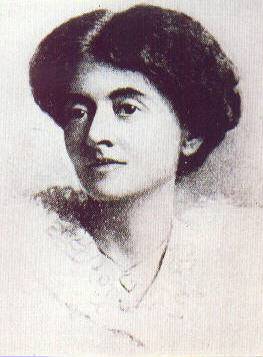
Marion M. Scott, c. 1911. [Blevins] |
1. The Prince family in America thought so highly of Sydney Scott that several generations have named their sons after him. [Go back to text.]
2. Violin Verses received positive reviews in newspapers in England, Scotland and Ireland. [Go back to text.]
3. In 1930, discouraged that
all
seats in the new BBC orchestra were going to men, Marion Scott led a
dignified
contingent from the Society of Women Musicians to BBC headquarters and
won agreement from the BBC to audition all instrumentalists behind a
screen
to give women an equal chance to compete on their own merits. [Go
back to text.]
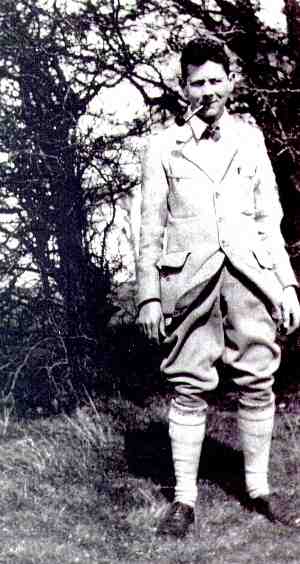
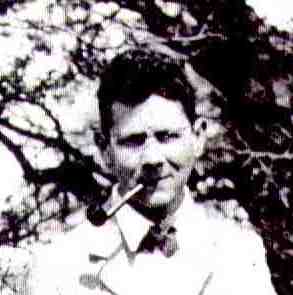
Gerald Finzi, photographed by his
mother on a hill outside Winchester England, in 1925.
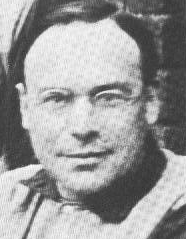
Frederick William “Willy” “Will”
“F. W.” Harvey, c. 1922 (1888-1957).
Anthony Boden:
F.W. Harvey: Soldier, Poet
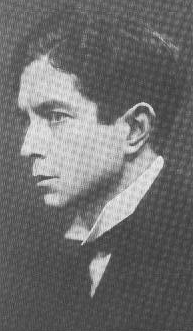
Herbert “Howler” Howells, c. 1920
(1892-1983).
|
|
